John Ruskin - Ariadne Florentina - Six Lectures on Wood and Metal Engraving
Здесь есть возможность читать онлайн «John Ruskin - Ariadne Florentina - Six Lectures on Wood and Metal Engraving» — ознакомительный отрывок электронной книги совершенно бесплатно, а после прочтения отрывка купить полную версию. В некоторых случаях можно слушать аудио, скачать через торрент в формате fb2 и присутствует краткое содержание. Жанр: foreign_home, literature_19, visual_arts, foreign_antique, на английском языке. Описание произведения, (предисловие) а так же отзывы посетителей доступны на портале библиотеки ЛибКат.
- Название:Ariadne Florentina: Six Lectures on Wood and Metal Engraving
- Автор:
- Жанр:
- Год:неизвестен
- ISBN:нет данных
- Рейтинг книги:4 / 5. Голосов: 1
-
Избранное:Добавить в избранное
- Отзывы:
-
Ваша оценка:
- 80
- 1
- 2
- 3
- 4
- 5
Ariadne Florentina: Six Lectures on Wood and Metal Engraving: краткое содержание, описание и аннотация
Предлагаем к чтению аннотацию, описание, краткое содержание или предисловие (зависит от того, что написал сам автор книги «Ariadne Florentina: Six Lectures on Wood and Metal Engraving»). Если вы не нашли необходимую информацию о книге — напишите в комментариях, мы постараемся отыскать её.
Ariadne Florentina: Six Lectures on Wood and Metal Engraving — читать онлайн ознакомительный отрывок
Ниже представлен текст книги, разбитый по страницам. Система сохранения места последней прочитанной страницы, позволяет с удобством читать онлайн бесплатно книгу «Ariadne Florentina: Six Lectures on Wood and Metal Engraving», без необходимости каждый раз заново искать на чём Вы остановились. Поставьте закладку, и сможете в любой момент перейти на страницу, на которой закончили чтение.
Интервал:
Закладка:
John Ruskin
Ariadne Florentina: Six Lectures on Wood and Metal Engraving
LECTURE I
1. The entrance on my duty for to-day begins the fourth year of my official work in Oxford; and I doubt not that some of my audience are asking themselves, very doubtfully—at all events, I ask myself, very anxiously—what has been done.
For practical result, I have not much to show. I announced, a fortnight since, that I would meet, the day before yesterday, any gentleman who wished to attend this course for purposes of study. My class, so minded, numbers four, of whom three wish to be artists, and ought not therefore, by rights, to be at Oxford at all; and the fourth is the last remaining unit of the class I had last year.
2. Yet I neither in this reproach myself, nor, if I could, would I reproach the students who are not here. I do not reproach myself; for it was impossible for me to attend properly to the schools and to write the grammar for them at the same time; and I do not blame the absent students for not attending a school from which I have generally been absent myself. In all this, there is much to be mended, but, in true light, nothing to be regretted.
I say, I had to write my school grammar. These three volumes of lectures under my hand, 1 1 "Inaugural Series," "Aratra Pentelici," and "Eagle's Nest."
contain, carefully set down, the things I want you first to know. None of my writings are done fluently; the second volume of "Modern Painters" was all of it written twice—most of it, four times,—over; and these lectures have been written, I don't know how many times. You may think that this was done merely in an author's vanity, not in a tutor's care. To the vanity I plead guilty,—no man is more intensely vain than I am; but my vanity is set on having it known of me that I am a good master, not in having it said of me that I am a smooth author. My vanity is never more wounded than in being called a fine writer, meaning—that nobody need mind what I say.
3. Well, then, besides this vanity, I have some solicitude for your progress. You may give me credit for it or not, as you choose, but it is sincere. And that your advance may be safe, I have taken the best pains I could in laying down laws for it. In these three years I have got my grammar written, and, with the help of many friends, all working instruments in good order; and now we will try what we can do. Not that, even now, you are to depend on my presence with you in personal teaching. I shall henceforward think of the lectures less, of the schools more; but my best work for the schools will often be by drawing in Florence or in Lancashire—not here.
4. I have already told you several times that the course through which I mean every student in these schools should pass, is one which shall enable them to understand the elementary principles of the finest art. It will necessarily be severe, and seem to lead to no immediate result. Some of you will, on the contrary, wish to be taught what is immediately easy, and gives prospect of a manifest success.
But suppose they should come to the Professor of Logic and Rhetoric, and tell him they want to be taught to preach like Mr. Spurgeon, or the Bishop of –.
He would say to them,—I cannot, and if I could I would not, tell you how to preach like Mr. Spurgeon, or the Bishop of –. Your own character will form your style; your own zeal will direct it; your own obstinacy or ignorance may limit or exaggerate it; but my business is to prevent, as far as I can, your having any particular style; and to teach you the laws of all language, and the essential power of your own.
In like manner, this course, which I propose to you in art, will be calculated only to give you judgment and method in future study, to establish to your conviction the laws of general art, and to enable you to draw, if not with genius, at least with sense and propriety.
The course, so far as it consists in practice, will be defined in my Instructions for the schools. And the theory connected with that practice is set down in the three lectures at the end of the first course I delivered—those on Line, Light, and Color.
You will have, therefore, to get this book, 2 2 My inaugural series of seven lectures (now published uniform in size with this edition. 1890).
and it is the only one which you will need to have of your own,—the others are placed, for reference, where they will be accessible to you.
5. In the 139th paragraph it states the order of your practical study in these terms:—
"I wish you to begin by getting command of line;—that is to say, by learning to draw a steady line, limiting with absolute correctness the form or space you intend it to limit; to proceed by getting command over flat tints, so that you may be able to fill the spaces you have inclosed evenly, either with shade or color, according to the school you adopt; and, finally, to obtain the power of adding such fineness of drawing, within the masses, as shall express their undulation, and their characters of form and texture."
And now, since in your course of practice you are first required to attain the power of drawing lines accurately and delicately, so in the course of theory, or grammar, I wish you first to learn the principles of linear design, exemplified by the schools which (§ 137) you will find characterized as the Schools of Line.
6. If I had command of as much time as I should like to spend with you on this subject, I would begin with the early forms of art which used the simplest linear elements of design. But, for general service and interest, it will be better that I should sketch what has been accomplished by the greatest masters in that manner; the rather that their work is more or less accessible to all, and has developed into the vast industries of modern engraving, one of the most powerful existing influences of education and sources of pleasure among civilized people.
And this investigation, so far from interrupting, will facilitate our examination of the history of the nobler arts. You will see in the preface to my lectures on Greek sculpture that I intend them to be followed by a course on architecture, and that by one on Florentine sculpture. But the art of engraving is so manifestly, at Florence, though not less essentially elsewhere, a basis of style both in architecture and sculpture, that it is absolutely necessary I should explain to you in what the skill of the engraver consists, before I can define with accuracy that of more admired artists. For engraving, though not altogether in the method of which you see examples in the print-shops of the High Street, is, indeed, a prior art to that either of building or sculpture, and is an inseparable part of both, when they are rightly practiced.
7. And while we thus examine the scope of this first of the arts, it will be necessary that we learn also the scope of mind of the early practicers of it, and accordingly acquaint ourselves with the main events in the biography of the schools of Florence. To understand the temper and meaning of one great master is to lay the best, if not the only, foundation for the understanding of all; and I shall therefore make it the leading aim of this course of lectures to remind you of what is known, and direct you to what is knowable, of the life and character of the greatest Florentine master of engraving, Sandro Botticelli; and, incidentally, to give you some idea of the power of the greatest master of the German, or any northern, school, Hans Holbein.
8. You must feel, however, that I am using the word "engraving" in a somewhat different, and, you may imagine, a wider, sense, than that which you are accustomed to attach to it. So far from being a wider sense, it is in reality a more accurate and restricted one, while yet it embraces every conceivable right application of the art. And I wish, in this first lecture, to make entirely clear to you the proper meaning of the word, and proper range of the art of, engraving; in my next following lecture, to show you its place in Italian schools, and then, in due order, the place it ought to take in our own, and in all schools.
Читать дальшеИнтервал:
Закладка:
Похожие книги на «Ariadne Florentina: Six Lectures on Wood and Metal Engraving»
Представляем Вашему вниманию похожие книги на «Ariadne Florentina: Six Lectures on Wood and Metal Engraving» списком для выбора. Мы отобрали схожую по названию и смыслу литературу в надежде предоставить читателям больше вариантов отыскать новые, интересные, ещё непрочитанные произведения.
Обсуждение, отзывы о книге «Ariadne Florentina: Six Lectures on Wood and Metal Engraving» и просто собственные мнения читателей. Оставьте ваши комментарии, напишите, что Вы думаете о произведении, его смысле или главных героях. Укажите что конкретно понравилось, а что нет, и почему Вы так считаете.
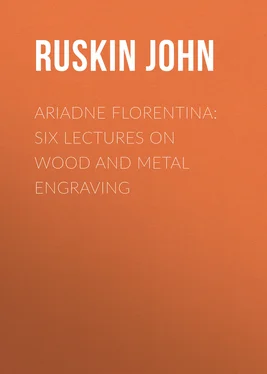



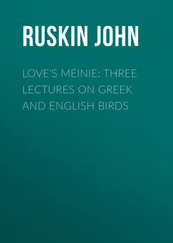
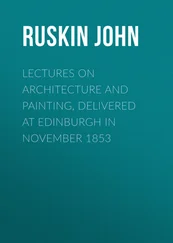

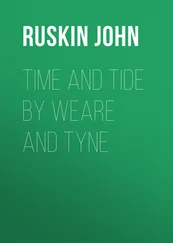
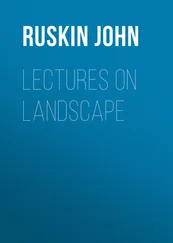


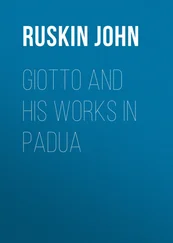
![John Bruce - The Lettsomian Lectures on Diseases and Disorders of the Heart and Arteries in Middle and Advanced Life [1900-1901]](/books/749387/john-bruce-the-lettsomian-lectures-on-diseases-and-disorders-of-the-heart-and-arteries-in-middle-and-advanced-life-1900-1901-thumb.webp)